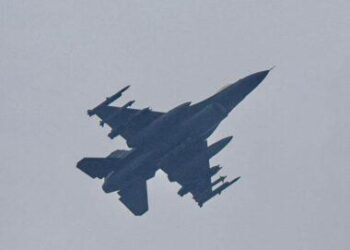Belgium is enhancing its airspace surveillance capabilities following a series of unauthorized drone incursions that have raised security concerns. In response to these recent incidents, Belgian authorities have announced measures aimed at strengthening detection and prevention systems to safeguard critical infrastructure and ensure public safety. The move underscores growing challenges faced by European nations in managing the risks posed by the increasing use of unmanned aerial vehicles.
Belgium Enhances Airspace Surveillance to Counter Rising Drone Threats
In response to a surge in unauthorized drone activities, Belgian authorities have initiated a comprehensive upgrade to their airspace monitoring systems. This move aims to reinforce national security and protect critical infrastructure from potential aerial threats posed by unmanned aerial vehicles. The enhanced surveillance network incorporates cutting-edge radar technology, advanced signal detection, and real-time data integration to ensure rapid identification and neutralization of suspicious drone operations.
Key measures include:
- Deployment of multi-sensor detection units across major urban centers
- Collaboration with European partners for shared drone threat intelligence
- Improved regulatory frameworks supporting swift response protocols
- Public awareness campaigns encouraging reporting of suspicious drone activity
| Technology | Function | Coverage Area |
|---|---|---|
| 3D Radar Systems | Detection & Tracking | Nationwide |
| RF Signal Analyzers | Signal Interception | High-risk zones |
| AI-Powered Analytics | Threat Assessment | Command Centers |
Authorities Deploy Advanced Detection Technology to Bolster National Security
In response to several recent unauthorized drone incursions across Belgian airspace, government officials have rolled out a suite of state-of-the-art detection and monitoring systems designed to enhance national security. These cutting-edge technologies include radar enhancements, radio frequency scanners, and artificial intelligence-driven analytics to identify and track unmanned aerial vehicles (UAVs) in real time. By integrating these technologies into existing air traffic control networks, authorities aim to swiftly detect potential threats and coordinate rapid responses without compromising civil aviation operations.
Key features of the newly deployed detection technology include:
- Multi-sensor fusion combining radar, acoustic, and visual data for increased accuracy
- Automated alert systems connected directly to security agencies for instant notification
- Geofencing capabilities to restrict drone access over sensitive locations
- Persistent data logs to support investigative and forensic efforts
| Technology | Purpose | Effectiveness |
|---|---|---|
| Radar Enhancement | Broad-range UAV detection | High |
| RF Scanners | Signal tracking and source identification | Moderate |
| AI Analytics | Behavioral pattern recognition | High |
Experts Urge Stricter Regulations and Increased Public Awareness on Drone Use
Authorities and security experts alike have emphasized the urgent need for a comprehensive regulatory framework to address the expanding presence of drones in Belgian airspace. Concerns center on potential risks to both civilian aviation and critical infrastructure, especially as incidents of unauthorized drone activity have surged in recent months. Experts advocate for enhanced licensing requirements for drone operators, implementation of geofencing technologies, and stricter penalties for violations to deter reckless or malicious use.
Alongside tighter laws, increasing public knowledge about responsible drone operation is seen as essential. Awareness campaigns targeting recreational users aim to educate on restricted areas, airspace safety protocols, and reporting suspicious drone flights. The table below outlines key recommendations from the expert panel, highlighting priorities for policy makers and communities alike:
| Recommendation | Focus Area | Expected Impact |
|---|---|---|
| Mandatory Registration | Operator Accountability | Improved traceability of drones |
| Public Awareness Campaigns | Community Engagement | Reduced inadvertent violations |
| Integration of Detection Systems | Airspace Security | Early threat identification |
| Revised Penalties | Legal Deterrent | Lower incidence of illegal drone flights |
In Summary
As Belgium strengthens its airspace surveillance capabilities in response to recent drone incursions, the move underscores growing concerns over national security and air traffic safety in an era of increasing unmanned aerial activity. Authorities emphasize that enhanced monitoring and stricter regulations are essential to safeguarding both civilian and military airspace, reflecting a broader European effort to address the challenges posed by emerging drone technologies.















